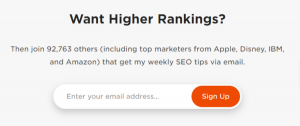Mapping Marketers’ Next Moves In Tech’s Privacy-Focused Future
“Data-Driven Thinking” is written by members of the media community and contains fresh ideas on the digital revolution in media.
Today’s column is written by Luke Taylor, COO at TrafficGuard.
Tech’s push for a privacy-focused future is impacting everyone from publishers to ecommerce marketplaces, but few have felt the effects more than marketers.
Amid vanishing third-party cookies, Apple’s recent ITP changes, shortened remarketing windows and altered baselines, marketers can make several smart moves to stem diminishing returns. Here’s where marketers are likely already seeing impacts, and some next steps they can take to reset their efforts.
Attribution: the top concern
The biggest concern to marketers at the moment is attribution. With ITP, JavaScript-set cookies have a window of seven days of inactivity, after which, they will be reset. This means it will be harder for marketers to see which channels, creatives and messaging contributed to each conversion. In turn, this diminished visibility makes it difficult to know where to invest and optimize.
Marketers’ next best moves:Change what success means. Doing so likely means abandoning old metrics – your sale conversion might be too distant from the advertising engagement to accurately attribute, so what are some earlier stronger indicators of propensity to convert that you can start to use as proxies for channel success? For now, while you can still effectively attribute with luxurious windows for the non-Apple audience, you can also start developing and testing hypotheses against real performance.
Also, start developing a process for measuring incremental uplift. When you can’t tie every engagement to a conversion, you need methods to help understand the contributions of each channel and campaign. Get an understanding of lag times between investment and conversion. When you are measuring uplift, this will set the expectation of when you should see results following increased investment in a specific channel.
Finally, consider testing optimization tools that set trackers with the server to get better visibility and test new solutions in parallel with existing attribution methods now.
A/B testing breaks down
A/B testing tools will no longer be able to rely on cookies to identify your returning test audience, which is going to make it hard to see whether some visitors get the same test experience over and over again, or if they get alternate variations.
Marketers’ next best moves
Confirm you are tracking visitors with first-party cookies. If your traffic traverses multiple domains or subdomains you may already have data gaps. First-party tracking will help you maintain a consistent baseline across all online properties.
Desktop analytics will double-count visitors
As most analytics solutions rely on JavaScript, after seven days of inactivity, cookies die. Every visitor that returns after their cookie has expired will look like a new visitor, rather than a returning one, inflating unique visitor counts in your analytics.
Marketers’ next best move
Without the ability to attribute conversions to a source that delivered a visitor more than seven days ago, marketers should start testing other success metrics and how they correlate to conversions. Doing this now means testing correlations while they can still track conversions on some browsers.
Start testing indicators of success that occur within a seven-day cookie window and can be tied to your source info. Test new tracking solutions and get your first-party tracking running correctly. Get Google Analytics 4 set up and collect data to test and compare. All new Google Analytics features will be introduced to Google Analytics 4, including any developments in probabilistic cross-site attribution.
Retargeting audiences shrink
The retargeting pool will only consist of users active within the seven day cookie life, which means smaller audiences for retargeting. This change will be especially troublesome for any business whose customers have long-lead purchasing cycles, as it will be harder for these businesses to stay top of mind throughout a longer decision making process.
Marketers’ next best move
This change demands creativity. Budgets earmarked for retargeting networks will likely shrink in line with retargeting audience sizes. Consider how you might create mini conversion points to capture details for future reengagement. These low-friction conversion points might include downloadable content, discounts, tutorials, templates, calculators or other resources of value to your audience. Then you can build retargeting based on first-party data as well as engaging through email marketing. This strategy helps you keep your brand top of mind, increases engagement frequency and when executed well, improves brand perception.
ITP is just one privacy focused initiative amongst an unstoppable tide of changes on the horizon, spurred by both tech and regulation. While much of your audience’s activity (outside of Apple users) is still trackable, now is the time to hypothesize, test, learn and adapt how you can measure marketing success when you can no longer attribute every conversion to its source. The extent you can prepare now will determine the level of disruption future privacy initiatives will have on your marketing efforts.
Follow Luke Taylor (@lukeartscom) and AdExchanger (@adexchanger) on Twitter.
(7)





